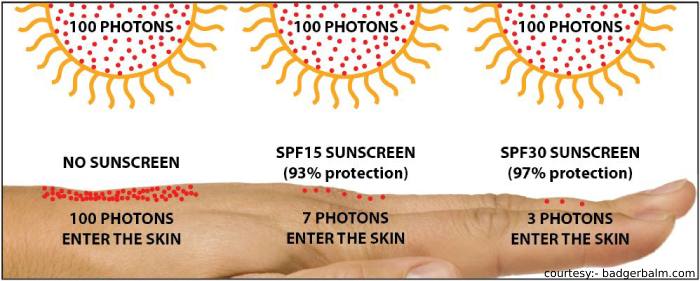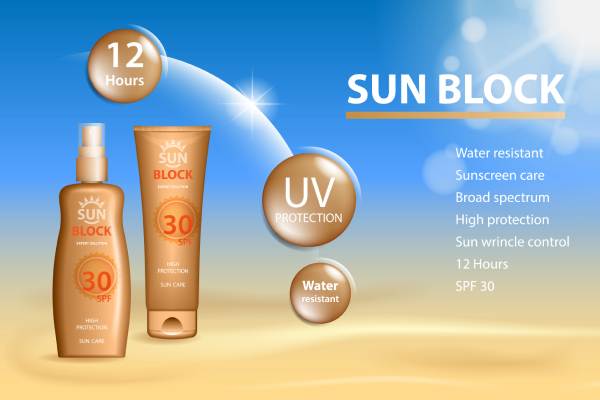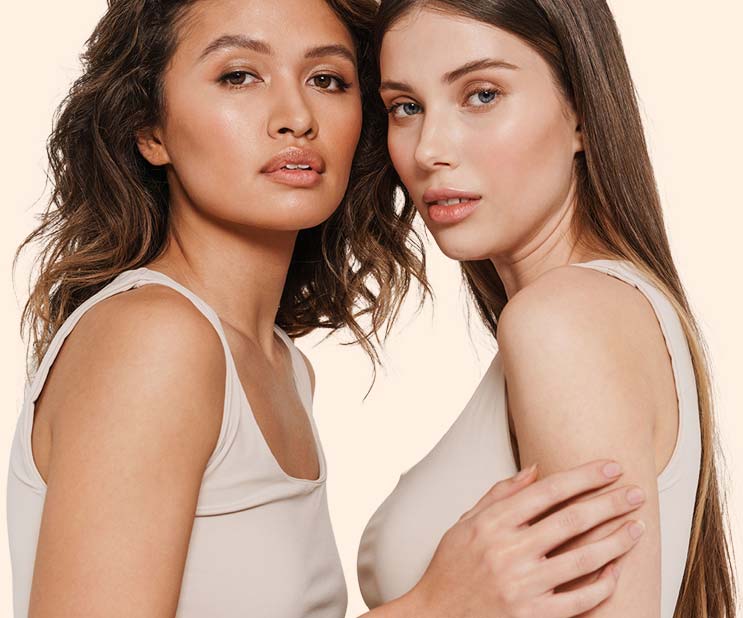Do you have sensitive skin, spend most days under the sun, or feel worried about premature aging signs? You have probably already heard a lot about how sun protection is an important part of any beauty regimen. That’s when the sunblock vs. sunscreen dilemma occurs.
Yes, these two terms are often used interchangeably, and people assume that the effects are also the same. However, they actually differ from one another regarding ingredients and benefits. So how are they not the same and which one should you use? Find out by reading below!
1. Understanding The Lingo
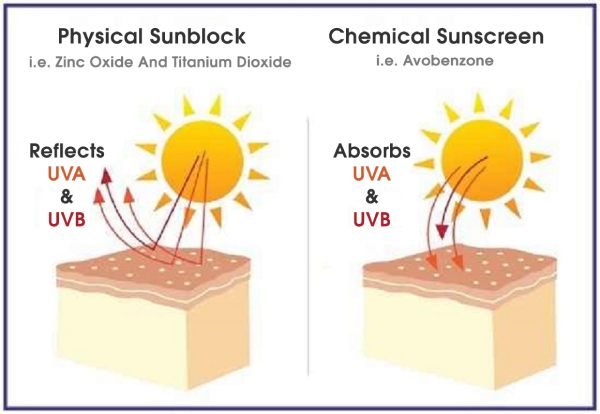
Before we get into the actual sunblock vs. sunscreen discussion, you must first understand the different terms used in order to help you make sense of the difference between sunscreen and sunblock. These include the following:
-
UVA and UVB Radiation
There are two types of ultraviolet or UV radiations from the sun: UVA and UVB rays. UVA rays have long wavelengths while UVB rays have shorter wavelengths. Both of these cause skin damage, premature aging, and increased risk of having skin cancer.
UVB rays are the main reason behind sunburn or redness of the skin after sun exposure. They penetrate the epidermal layer of the skin and are the type that causes the most damage especially around midday, burning the skin.
UVA has less noticeable effects and penetrates the skin more deeply. It is the chief cause of sagging, wrinkling, leathering, and other aging signs caused by light (photoaging). It is very intense and can seep through cloud covers or glass roofs and walls.
UVA rays also enhance the carcinogenic effects of UVB radiation and on their own could also cause cancer. Exposure to both rays enhances the skin’s production of the pigment melanin as a defense mechanism against sun damage. This is what makes your skin darker, or tan.
-
SPF
![SPF]()
SPF or Sun Protection Factor is the measure of a product’s ability to prevent UVB damage. At least an SPF of 15 is recommended by the American Academy of Dermatology for everyday use. A higher SPF may be needed by people at high risk of skin cancer or with fair skin.
How does it work, you ask? For instance, if your skin starts to get red after 20 minutes, an SPF 15 sunscreen should theoretically prolong that time, which means it should prevent reddening for about five hours.
Regarding percentages, an SPF 15 sunscreen can filter out 93%, an SPF 30 filters 97% and an SPF 50 keeps away 98% of all incoming UVB rays.
However, it’s important to remember that in reality, no matter how strong or how high a product’s SPF is, it should not be expected to be effective after two hours without reapplication. Also, skin reddening is a reaction to UVB rays alone and not UVA damage.
So, while your sunscreen could be protecting your skin from sunburn, there may be a lot more damage happening due to UVA radiation.
Related:- PHOTOAGING VS NORMAL AGING: CAUSES, SYMPTOMS AND HOW TO TREAT IT
2. What Is The Difference Between Sunblock And Sunscreen?

Although most people don’t realize it, sunblock and sunscreen are two different things. To understand this better, let’s first look at their characteristics and properties.
-
Sunscreen
Sunscreens can be described as products containing ingredients or a combination of these that help protect your skin from the sun’s UV radiation.
Sunscreens have varying abilities regarding protecting the skin against both types of UV rays. Some are designed to protect against only one type of UV radiation while some can protect against both. This type of sunscreen is almost invisible on the skin.
There are two types of sunscreen: physical and chemical sunscreens. According to a new edition of a Harvard Medical School Report called Skin Care and Repair, chemical sunscreens or chemical UV filters absorb instead of reflecting UV radiations from the sun.
They typically contain salicylates and cinnamates to protect the skin against UVB rays as well as benzophenones and avobenzone to protect against UVA rays. These ingredients may sometimes be listed as octyl methoxycinnamate, oxybenzone, and octyl salicylate and are known to irritate the skin.
When exposed to the sun, these ingredients also tend to be unstable and break down or degrade over time. So, for adequate protection, choose a product with a high SPF, apply it liberally, and reapply every two hours or so.
-
Sunblock
![Sunblock]()
Sunblock meaning, on the other hand, is that referring to physical sunscreens. These are the types that use zinc oxide and titanium dioxide as sunlight blocking active ingredients.
Shawn Allen, M.D. a dermatologist from Boulder, Colorado says that these ingredients, especially zinc, provide a more superior broad-spectrum UV radiation protection. These physical sunscreens create a protective layer on the skin surface and act as mirrors that reflect and scatter light, blocking the entrance of UV into the skin.
According to Dr. Kenneth A. Arndt, director of SkinCare Physicians and clinical professor of dermatology at Harvard Medical School, sunblocks often appear milky white and opaque on the skin while sunscreens are less visible.
Because the formulas are much thicker, sunblocks are not absorbed into the skin but remain on the surface to reflect UV radiation. They are also able to block most UVA and UVB radiation from the sun. Unlike sunscreen, sunblock does not need to be reapplied every few hours.
While most sunblocks contain non-irritating ingredients, the thickness can block the pores and cause acne. So, if you have acne-prone skin, choose a non-comedogenic kind. One that is free of any fragrance, parabens, or dye is also preferable.
Other terms used to call sunblock are mineral sunblock, physical sunblock, or mineral sunscreen. So, technically, sunblocks are a type of sunscreen.
But because none of these products can completely block the ultraviolet rays from the sun, the U.S. Food and Drug Administration (FDA) has passed a regulation on 2011 prohibiting the use of the term “sunblock” in identifying them and only allows the use of the term “sunscreen”.
The FDA believes that using “sunblock” is misleading and causes consumers to expect more or overestimate the effects.
You may be wondering: does sunblock prevent tanning? According to Mr. Seena Seka, senior product developer at Calypso, sunblocks can still cause tanning, but it will take a longer time. Sunscreens prevent sunburn by filtering the UV radiation while also allowing the skin to tan.
3. Sunblock Vs. Sunscreen: Which One Should You Use?
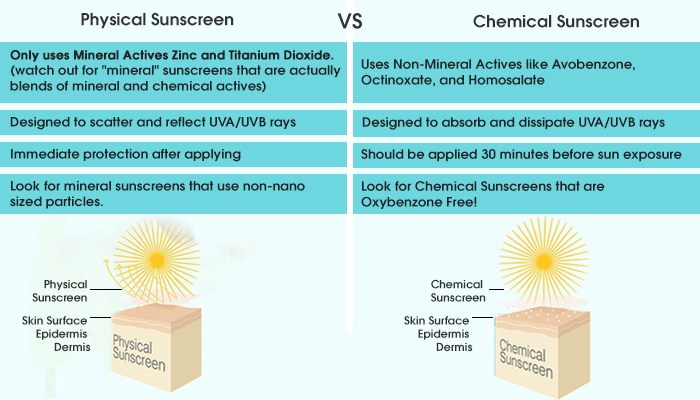
The answer to this question is depending on your needs and the amount of time or extent of sun exposure you are expecting. In any case, a broad-spectrum sunscreen can protect against both UVA and UVB radiation.
Use a chemical sunscreen which is less sticky for everyday wear and under makeup, making sure to reapply every couple of hours. Most experts also recommend sunscreen for sensitive skin.
For prolonged exposure in the field or outdoors, a stronger, water resistant “sunblock” or physical sunscreen is recommended. This stays on the skin even while you sweat and are good for playing sports or spending hot days on the beach.
Related: Sunblock Vs Sunscreen: Know The Exact Difference In Between Them
“Hope you find the post helpful and we are excited to hear what you think of it!”


